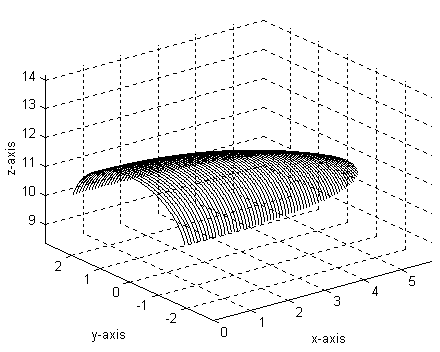
| Generation of Architectural Forms Through Linear Algebra |
|---|
Department of Mathematics
Politecnico di Milano, Milan, Italy
This work has grown in a rather
original environment, where a new approach to the relationships
between mathematics and architecture is conceived. Namely, mathematics
is not just considered as a useful calculation tool for structural
problems, but is seen by some mathematicians and architects as
an interpretative key of architectural forms. Under this aspect,
it is capable of highlighting symmetries and harmonic relations
among different parts, of making evident a structural logic,
thus becoming a tool that lends itself to even critical and historical
interpretation. In short, we can state that various aspects of
mathematics are used as a technical language, capable of speaking
about architecture.

Obviously our efforts are aimed in this direction. Namely, we are trying to apply to some significant classes of classical or modern architectural structures a mathematical taxonomy or, to be more precise, a geometrical model. In other words we want to describe them through mathematical formulae, even though it is very clear to us that such formulae have by no means influenced the creativeness of the designers. The purpose of our exercise is simply to better highlight the shape of the architectural object, to extract from it an inherent rule, to make evident its structural rigor.
The final result of this exercise is a geometrical three-dimension
model, that is, a description of the geometrical object (a locus,
or set of points) expressed through geometric analytical formulae,
and its subsequent display over normal bi-dimensional media,
such as paper print or computer screen.
To achieve this result one could use classical methods based
on geometrical properties of the described objects. However,
our approach is a different one and, as such, it is useful also
for shapes that at a first sight are not controlled by "classical"
relationships. At the same time, is more readily suitable to
a straightforward visualisation.
In this paper we will illustrate the following approach: by establishing a few basic elementary shapes we build the "core" of the architectural objects; by imposing on them movements and deformations, we dynamically determine a final shape; finally, we will give its equations and supply the relevant graphical representations.
ILLUSTRATION: The architectural form generated by linear algebra that corresponds to Sir Norman Foster's American Air Museum in Duxford, Cambridgeshire (UK).
ABOUT THE AUTHORS
Franca Caliò received her doctorate in mathematics from the University
of Turin, where she taught before moving to the Department of
Mathematics at the Politecnico di Milan, where she is a researcher
in Numerical Calculation. Since 1987 she is an associate professor
of Numeric Analysis in the Faculty of Engineering of the Politecnico
di Milano. In addition to teaching in the area of numeric calculation
for engineering students, since 1988 she has also taught courses
in mathematics in the Faculty of Architecture of the Politecnico
di Milano. She has published numerous papers in Italian and international
scientific journals on numeric analysis dealing with the approximation
in diverse dimensions with particular applications to integral
calculus. In recent years she has partecipated and collaborated
in the organization of several interdisciplinary conferences
examining the relationships between mathematics and design. She
is the author of several textbooks. In particular, her teaching
experience in the area of mathematics courses for the doctorate
degree in industrial design led to the publication of a textbook
presenting mathematical methods of design of curves and surfaces
based on linear algebra. She has also collaborated on the production
of a multimedia support package on this subject.
Elena Marchetti received her doctorate in mathematics at the Faculty of Sciences at the Università degli Studi di Milano. She was a researcher of mathematical analysis at the Department of Mathematics of the Politecnico di Milano, and since 1988 is an associate professor of "Istituzioni di Matematica" at the Faculty of Architecture of the Politecnico di Milano. For many years she taught in courses of mathematical analysis to engineering students, and since 1988 she teaches mathematics courses to architecture students. Her research activity is concentrated in the area of numeric analysis, principally regarding numeric integration and its applications. She has produced numerous publications in Italian and international scientific journals. Her participation and collaboration in several conferences dedicated to the application of mathematics to architecture has stimulated her interest in this subject. The experience gained through intense years of teaching courses to architecture students has led her to publish several textbooks, one of which regards lines and surfaces and has a multimedia support package, on the production of which she collaborated.
|
Franca Caliò and Elena Marchetti, "Generation of Architectural Forms Through Linear Algebra", pp. 23-34 in Nexus III: Architecture and Mathematics, ed. Kim Williams, Pisa: Pacini Editore, 2000. http://www.nexusjournal.com/conferences/N2000-CaliòMarchetti.html |
|
|
|
|
